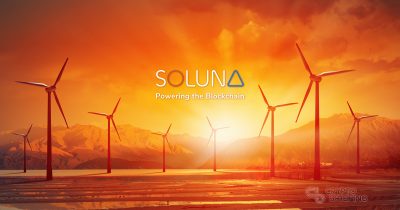BTC Mining Firm Soluna Plans 37k-Acre Sahara Wind Farm

Share this article
Soluna, a blockchain mining company, plans to build a 37,000-acre wind farm in the Sahara desert to provide clean renewable energy for BTC mining.
Soluna is currently in talks with the Moroccan government to construct a wind farm that can generate 900 megawatts of energy, every year. The company’s Jeff Belizaire said generated energy will be used to power a computer center in the nearby city of Dakhla that mines bitcoin (BTC) and other proof-of-work (PoS) cryptocurrencies.
The proposed site is in the Moroccan-controlled stretch of Western Sahara, one of the windiest regions in the world. Although it will initially work off-grid, there are plans for some of the surplus generated energy to be connected into the country’s energy infrastructure. Morocco’s financial regulators have warned citizens not to invest in cryptocurrencies.
Although the project is estimated to take five years, and cost somewhere in the region of $1.4bn-2.5bn, Soluna is looking to raise $100m for the initial phase for the wind farm to generate an estimated 30 megawatts every year.
Is BTC mining viable, long term?
The debate surrounding mining’s environmental impact is – pardon the pun – a hot topic. Critics point out the sudden upswing in activity at the end of last year placed an unsustainable burden on national grids. Consumption data collected by Digiconomist indicates BTC mining alone uses 73 terawatt hours (TWh) every year; double the amount consumed since the start of the year.
Recent research suggests mining may use far less energy than previously thought, however. A paper by the cryptocurrency investment firm CoinShares suggests mining uses roughly half of what Digiconomist estimates, with most of the energy derived from cheap renewables rather than fossil fuels. In China, for example, researchers found large mining operations relied on hydro-electricity.
Soluna isn’t the only company expanding its mining operations. Prominent bitcoin miner Bitmain is planning to open a data center in Texas, on the site of a former smelting plant; Canada’s Vogogo bought 14,000 BTC ASICs, the equivalent of 0.5% of the network’s hashing power in early July; CoinGeek signed an agreement to release its own branded ASIC-chip for the Bitcoin Cash (BCH) network.
Mining is still a highly profitable industry (at least for the major players), but there has recently been a shift towards networks that use alternative consensus algorithms, most notably Proof-of-Stake (PoS). One of the developmental goals for the Ethereum (ETH) network – once it has made headway with its scalability issues – is to shift over to PoS.
Every 210,000 blocks, the amount awarded to miners (called a block reward) halves. Miners received 50 BTC in 2009, but this halved to 25 BTC in 2012 and to 12.5 BTC in 2016; the reward is set to fall to 6.25 BTC sometime in 2020.
Mining investments are ballooning. Soluna’s initial $100m seems small fry compared to the proposed Bitmain IPO target, which some estimates place as high as $18bn. As block rewards continue to shrink, the long-term viability of BTC mining is fundamentally in question. In five years, the period estimated for Soluna to complete its wind farm initiative, mining may be consigned to the history books.
That said, there will still be a windfarm, a clean renewable energy provider that could power thousands of homes, local businesses, and utilities.
What do they say about clouds and silver linings?
The author is invested in BTC and ETH, which are mentioned in this article.
Share this article
